STARTING WITH LEADS: THE ESSENTIAL GUIDE TO GENERATING BUSINESS OPPORTUNITIES
In today’s rapidly evolving digital landscape, mastering the art of lead generation is key for small businesses and startups seeking growth. It’s the initial, crucial step in a journey that transforms strangers into loyal customers. For beginners, navigating the vast expanse of lead generation tactics can feel daunting, yet it’s an indispensable skill in the toolkit of modern entrepreneurship.
This article simplifies lead generation, offering essential insights and tactics for attracting potential customers.

Exploring the Basics: What Exactly is a Lead?
A lead is essentially a potential customer who has shown interest in your products or services, initiating the first step in the sales process. In the digital marketing realm, recognizing and categorizing leads is pivotal for crafting targeted strategies to enhance conversion rates.
Diving Deeper: Different Types of Leads Explained
1. New Lead – someone who has just shown interest in your offerings, such as by visiting your website or subscribing to a newsletter. They represent the initial opportunity for engagement and conversion.
2. Working Lead – someone in the process of being engaged by your team, through follow-ups or direct communication, to assess and encourage their journey towards making a purchase.
3. Nurturing Lead – someone that requires ongoing engagement through tailored content and communication to build interest and move them closer to a buying decision, despite not being immediately ready to purchase.
4. Unqualified Lead – someone does not currently meet the criteria to become a customer, typically due to a lack of budget, need, or authority, making them a lower priority for direct sales efforts.
5. Qualified Lead – someone that shows a high likelihood of becoming a customer, having passed initial assessments of need, interest, and ability to purchase, and thus is prioritized for conversion.
The Foundation of Growth: Understanding Lead Generation
Lead generation is the strategic process of attracting potential customers to your business, aiming to convert interest into sales. The goal is to build a pipeline of prospects, driving growth and increasing revenue for small businesses and startups in the competitive digital marketplace.
Guide to the Lead Generation Process
Stage 1. Discovery: The journey begins when a potential customer discovers your business through one of your marketing channels, such as a blog, social media platform, or your website. This step is foundational, as it introduces your brand to the prospect.
Stage 2. Engagement: Upon finding interest in your content, the potential customer encounters a call-to-action, a carefully designed prompt that nudges them towards taking a specific action, such as “Learn More” or “Sign Up.” The CTA is a critical element, guiding users from interest to engagement.
Stage 3. Landing Page: The CTA directs the potential customer to a landing page, setting the stage for a deeper conversation. Here, the business introduces a lead form, inviting the prospect to exchange their information for something of value, like an ebook, webinar, or free trial.
Stage 4. Conversion to Lead: Once the prospect fills out the form, they transition from a casual browser to a new lead. This moment marks a significant milestone in the lead generation process, opening the door to further nurturing and potential sales.
Throughout these stages, several elements play crucial roles: compelling marketing content captures the prospect’s attention; a clear and enticing CTA encourages them to take action; and a valuable offer or lead magnet seals the deal, convincing them to share their information. Each component must be carefully crafted and aligned with the prospect’s needs and interests, ensuring a seamless and effective lead generation journey.

Proven Tactics to Attract and Engage Potential Customers
Discovery
- Content Marketing: Create and distribute valuable, relevant content that addresses your target audience’s questions and needs. Blog posts, infographics, and videos can boost your visibility in search engine results, drawing in potential customers.
- SEO Optimization: Utilize search engine optimization techniques to increase your website’s ranking for relevant keywords, making it easier for potential customers to find you during their search queries.
- Social Media Engagement: Actively engage on social media platforms where your target audience spends their time. Share content, participate in conversations, and use targeted ads to increase your brand’s reach.
Call-to-Action (CTA)
- Compelling CTA Design: Design CTAs that stand out visually and textually, compelling users to take action. Use action-oriented language and position CTAs strategically across your website and marketing materials.
- Personalization: Tailor CTAs based on the user’s interaction history or content they’ve shown interest in, increasing the likelihood of engagement.
- A/B Testing: Regularly test different CTA designs, placements, and messages to find the most effective combinations for your audience.
Landing Page
- Focused Content: Ensure your landing page content is clear, concise, and directly relevant to the CTA that brought the visitor there. Highlight the value of what you’re offering in exchange for their information.
- Simplified Forms: Keep lead forms simple and straightforward, asking only for essential information to reduce friction and increase the likelihood of completion.
- Trust Signals: Include testimonials, reviews, or security badges on your landing page to build trust and credibility with first-time visitors.
Conversion to Lead
- Immediate Value Offer: Provide immediate value upon form submission, such as instant access to the promised resource or a thank you email with additional useful information.
- Welcome Series Emails: Automate a series of welcome emails that introduce new leads to your brand, provide further value, and gently guide them to the next steps in their buyer’s journey.
- Engagement Tracking: Implement tools to track new lead engagement, allowing you to personalize future communications and offers based on their interests and behaviors.
Key Takeaway
The journey through effective lead generation underscores the importance of a strategic approach in attracting, engaging, and nurturing potential customers. From initial discovery through content and SEO, to engagement via targeted CTAs and landing pages, each step is vital in converting strangers into leads.
However, the true power lies in efficiently managing these leads towards conversion—a process where an all-in-one CRM system like BOOST becomes indispensable. Click here to learn more about BOOST!






